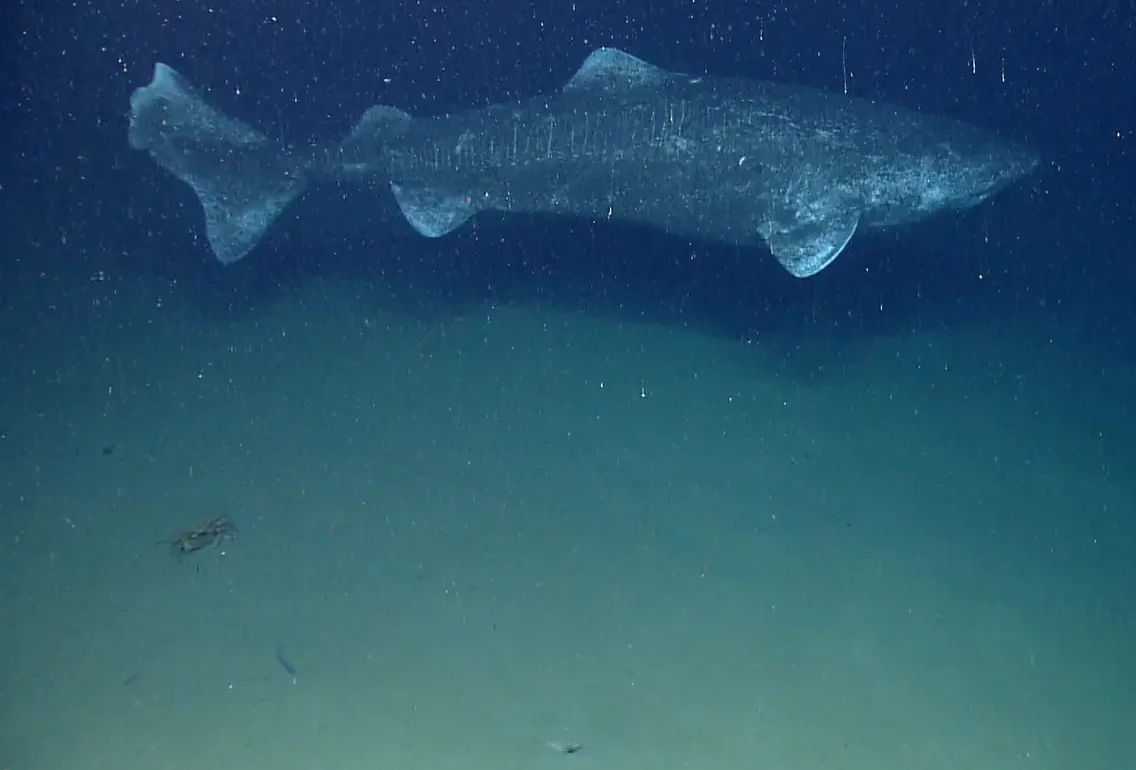Experts believe they have uncovered the secret behind the remarkable longevity of Greenland sharks, which can live up to 500 years. This discovery could provide insights into anti-aging mechanisms applicable to humans. Theories about their long lives have traditionally centered on their frigid, deep-sea habitats in the Arctic and North Atlantic, where they reside at depths of up to 8,684 feet and exhibit minimal movement.
Recent studies, however, suggest that the key to their longevity lies in their constant metabolic activity. Unlike other animals, the Greenland shark’s metabolic rate does not appear to change with age.
This was presented at the Society of Experimental Biology Conference, with lead author Ewan Camplisson, a doctoral student at the University of Manchester, emphasizing that these sharks do not show traditional signs of aging.

Metabolism, the chemical process by which enzymes break down nutrients into energy and facilitate bodily repair, typically slows down with age in most animals. This reduction in metabolic rate leads to decreased cell turnover, reduced energy production, and slower bodily repair. In contrast, the Greenland shark maintains a stable metabolic rate throughout its life.
The study involved taking muscle tissue samples from 23 Greenland sharks, aged between 60 and 200 years, off the south coast of Disko Island in central Greenland. Researchers measured the activity of five enzymes to assess each shark’s metabolic rate and found no significant differences across the ages. This stability in enzyme activity suggests that the sharks do not experience the typical metabolic decline seen in other animals.
The constant metabolic rate in Greenland sharks indicates that they avoid the usual degradation and inefficiency associated with aging. This unique characteristic enables them to achieve extraordinary longevity, providing valuable insights into how metabolic stability might contribute to extended lifespans.

